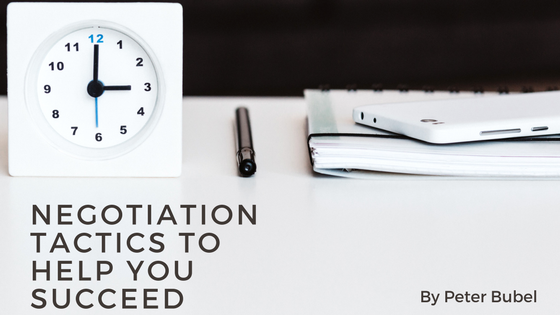Negotiations can be found in many different aspects of daily life. In the home, wives and husbands negotiate the housework, and moms and dads attempt to convince their toddlers to take one more bite. Negotiation is also found in daily business. However, it’s outcome significantly outweighs results like having to take out the trash and vacuum.
Most negotiation strategies sound a lot like common sense, although it is surprising how often the steps of the strategy are forgotten once emotion enters the picture. This is not to say that emotion should be left out and ignored during negotiation. On the contrary, good negotiators identify and influence emotions, rather than denying or ignoring them.
Mental Barriers
The traditional negotiation style takes on an opposing-parties model: Supplier V.S. Client. The newer negotiation model takes on a business partners approach where openness and sincerity replace the self-centeredness of the traditional model. The modern model allows for negotiators to see how there could be an advantage for themselves while also working towards benefits for the other side.
The tactic used to display openness and sincerity? Simple: share more information. This allows the other party to feel confident in your motive and enables them to be open and self-assured. On the other hand, mistrust breeds mistrust, and if you begin a negotiation by asserting that you are solely concerned about your own needs, the other party will quickly adjust to negotiating without considering your wants. Be open, honest, and forthcoming by asking questions and making demands of yourself and your partner. Show a sincere interest in maximizing benefits for both parties, and the negotiation is far more likely to go your way.
Practice Being Selective
Being selective is a useful skill in many different aspects, and the benefits can be numerous. The first way to practice being selective is with your communication. While negotiating, spend more time listening than you do speaking, and listen for moments when you can selectively repeat words back to your counterpart. This is one of the best ways to establish rapport. Repeat what was said with an upward inflection to slow the conversation down, allow more time for you to think, and encourage your counterpart to share more.
Another great way to practice being selective is with tactical empathy. This is one of those areas where the use of emotional intelligence can give you a leg-up on the competition. Practicing tactical empathy allows you to demonstrate to your counterpart that you see the frustrations of their emotions. Use phrases like, “It sounds like you are concerned with..” and “It seems like you are upset about…” to proactively label their fears or problems. This can go along way in disarming them and allowing for a successful negotiation.
BATNA (Best Alternative To A Negotiated Agreement)
In any negotiation process, your ability and willingness to walk away and take another deal is your best source of power. Significantly increase your negotiating skills by spending time prior to the negotiation identifying the best alternative to a negotiated agreement, and take steps to improve it.
Present Multiple Offers (MESOs)
Rather than sending one offer at a time, save time and send multiple offers at once. This decreases the chances of a stalemate, and promote more creative solutions, as well as reflects readiness and professionalism. Even if all proposals are rejected, you could ask for feedback on what could be fixed and which was the most well-liked. Then work on modifying the offer in a way that pleases your counterpart, while also meeting your needs. This is an excellent strategy for gaining control of the offering process.

